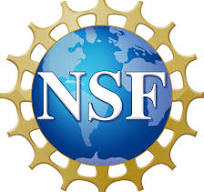Applications of Laser Probing
Web link opens in a new tab; file link initiates download.
Currently, Berkeley Chemistry fellows (postdocs, graduate students, and undergrads) are using extreme ultraviolet (XUV) light generated by table-top lasers to probe potential solar energy converting materials in order to analyze their charge carriers’ excitation and relaxation process. The complex relaxation (recombination of electrons and holes) processes in these materials are suspected to determine the efficiency of these materials, when used for solar panels. The total efficiency is affected by the range of wavelengths of light absorbed, the efficiency of electron-hole separation, and the transport rate of electrons to metal surface contacts. This lesson gives students opportunity to engage in research practices, critical thinking, and scientific literacy as science citizens. In this lesson students will breakdown academic texts and analyze mathematical models (data) of absorption/transmission spectra in order to both understand the research process and how photovoltaic cells are measured. Students will make inferences, predictions, and claims about material designs of solar panels based upon mathematical models and readings. As a summative assessment, students will academically communicate these claims to the community in a scientific magazine article.

